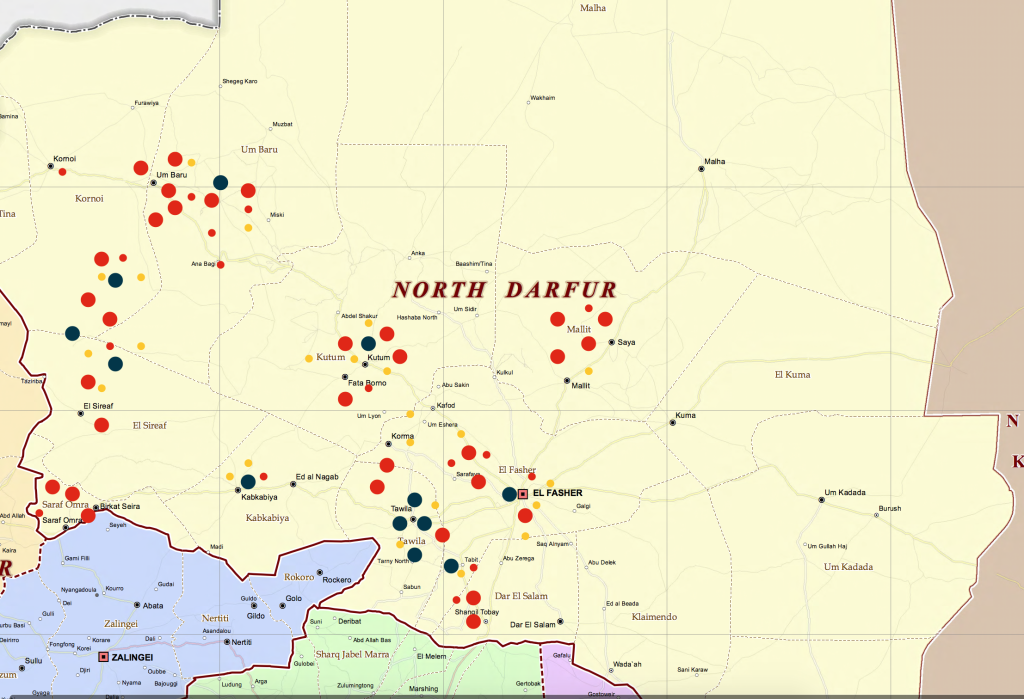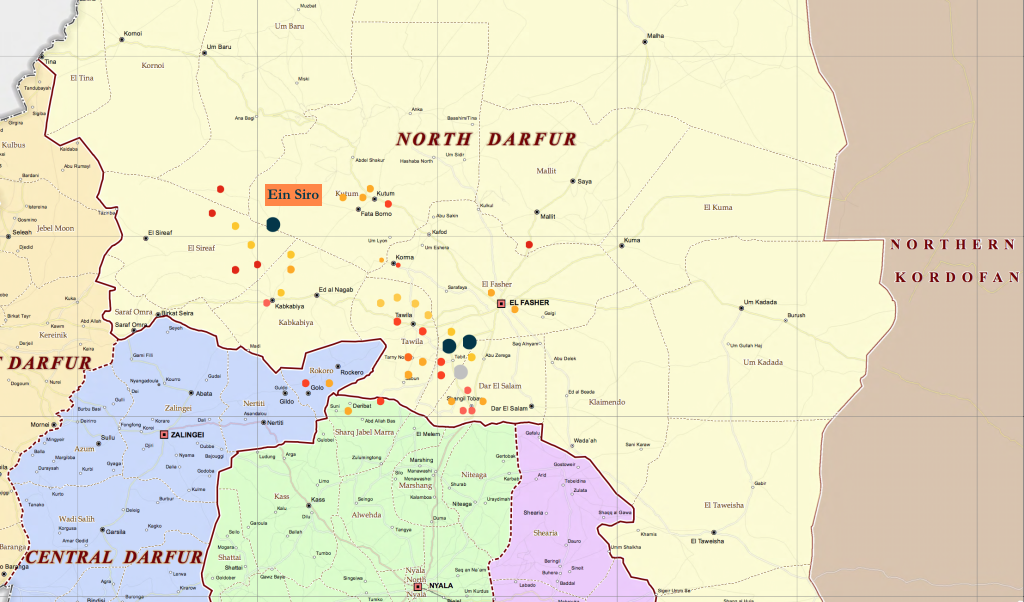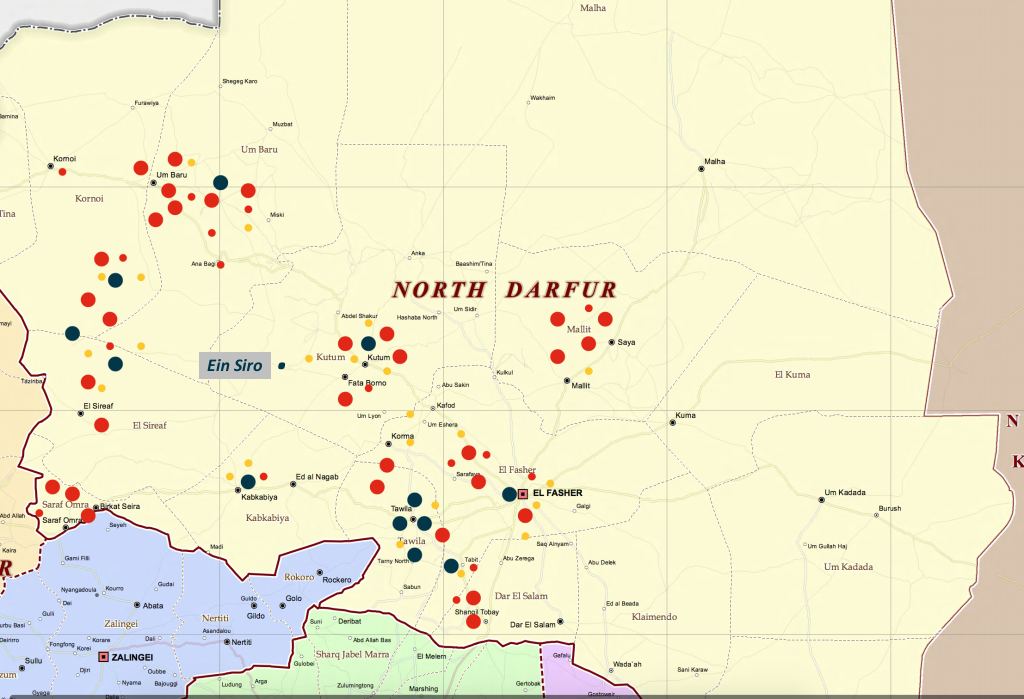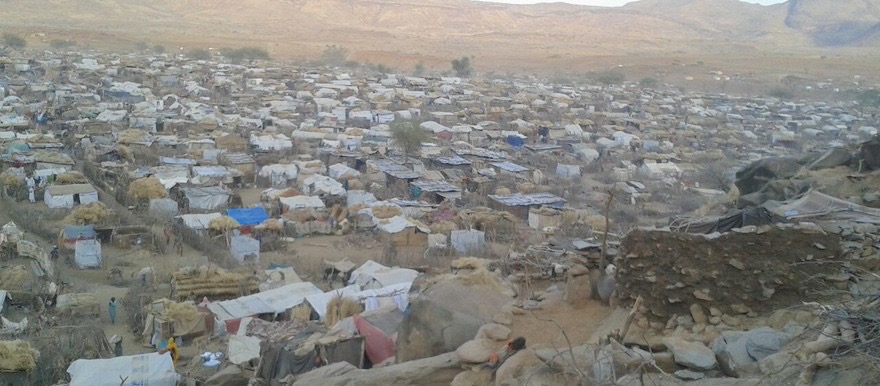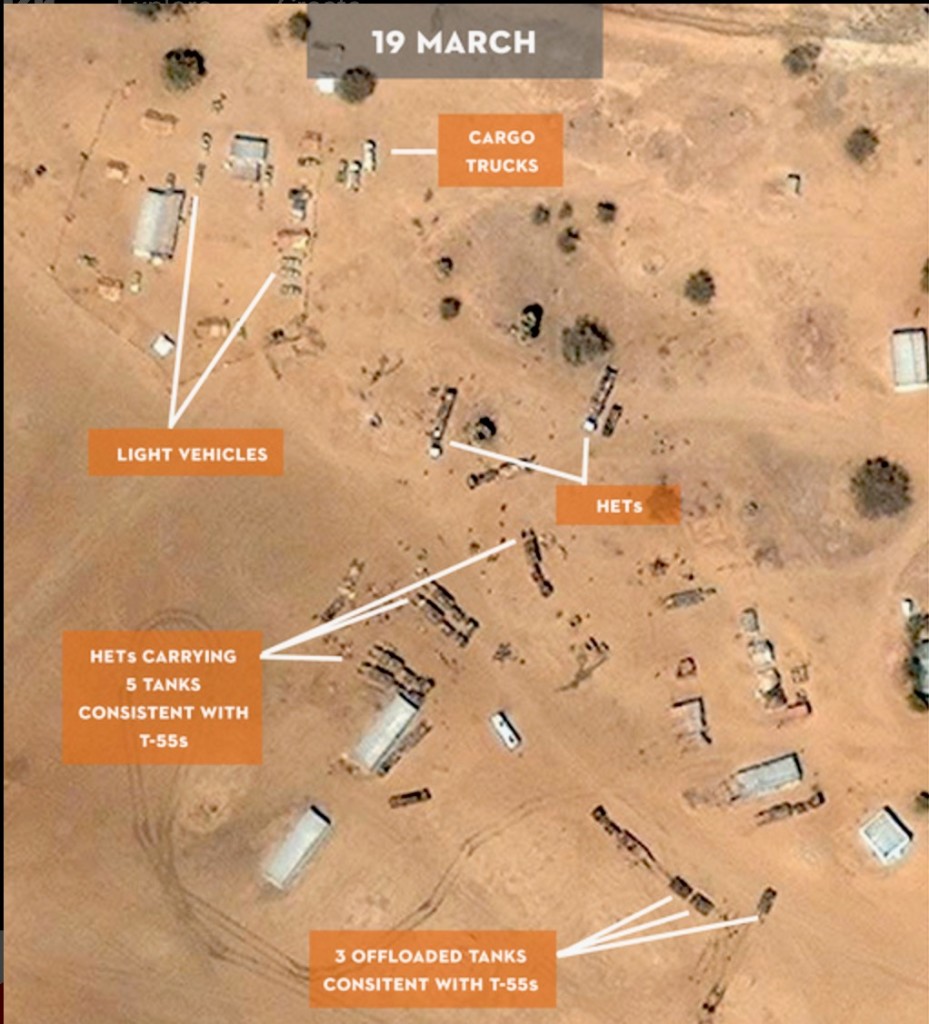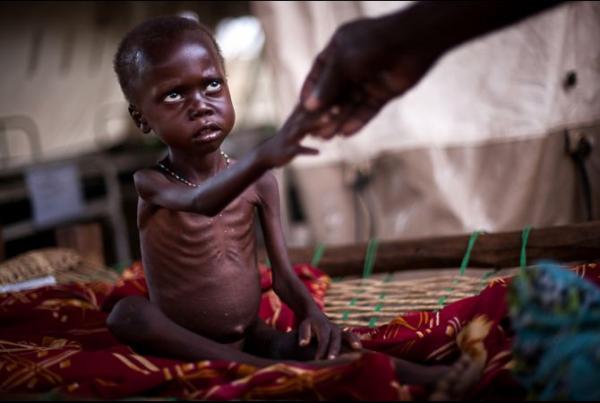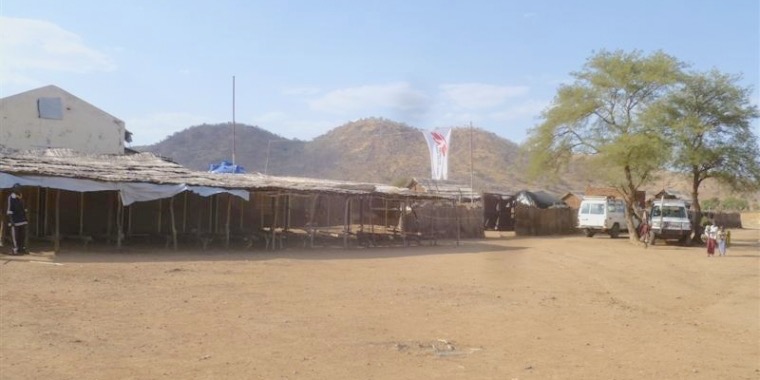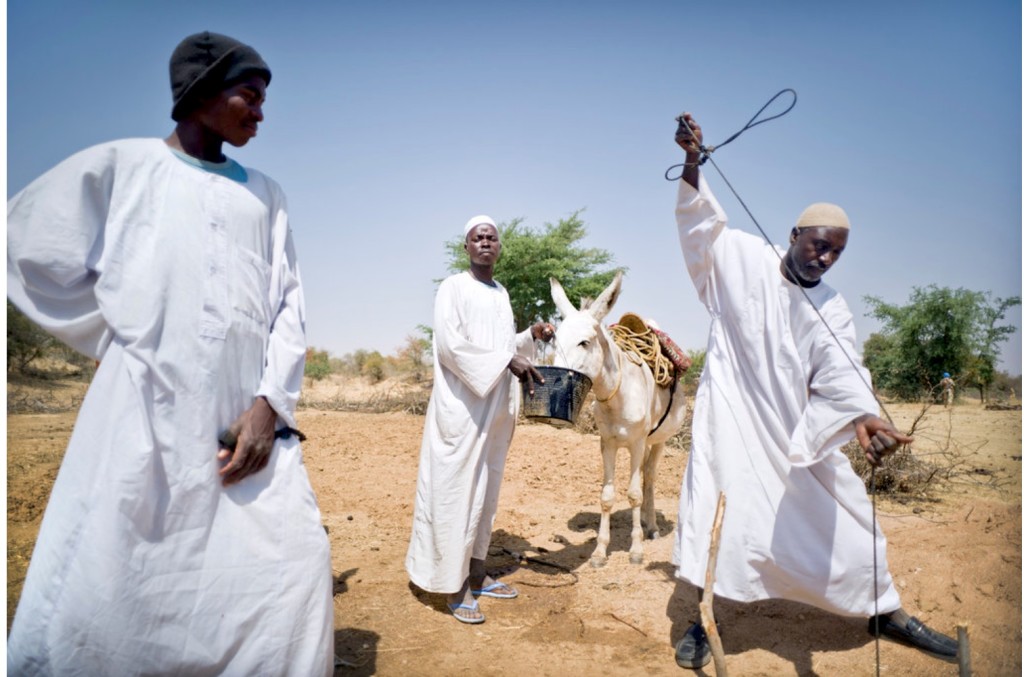“The International Embrace of Khartoum: Causes and Consequences for Greater Sudan”
The Society for the Study of the Sudans (UK)
School for Oriental and African Studies (SOAS), University of London
• Discussant: Professor Peter Woodward, Professor Emeritus, University of Reading.
• Chairperson: Dr. Lutz Oette, Director, Centre for Human Rights Law, SOAS
[This event was made possible by efforts on the part of staff from Waging Peace and Gill Lusk, Chairperson of Society for the Study of the Sudans (UK)]
I hope this evening is to make sense of my title by offering a highlighted history of the past five years in Sudan and South Sudan—greater Sudan as I will call it for convenience. The recent embrace of the National Islamic Front/National Congress Party regime (NIF/NCP), particularly by European nations, and most especially the UK, is at once conspicuous and, in my view, highly alarming—likely to perpetuate the ghastly realities evident everywhere in Sudan today:
- extremely severe repression of news publications continues to accelerate;
- crackdowns on increasingly numerous popular demonstrations becoming more violent;
- arrests of Sudanese human rights observers and lawyers are also growing;
Behind all these realities lies a total lack of democratic reform.
Further context is provided by the UN Office for the Coordination of Humanitarian Affairs (OCHA), which estimates that 5.4 million people in Sudan are in need of emergency relief aid. Malnutrition rates in Sudan, particularly for children, are among the very worst in the world, particularly in the traditionally marginalized regions, most notably Darfur, the eastern States of Sudan, South Kordofan, and Blue Nile. UNICEF estimated in 2014 that 2 million children were either acutely or severely malnourished. Stunting—chronic malnutrition—is endemic throughout the marginalized regions.
Economically, the country is in what I and many Sudanese economists believe is an irreversible nose-dive—signaled by a collapse of the agricultural sector, a lack of infrastructure investment, and gross financial corruption within a vast system of cronyism. Transparency International ranks Sudan 165th in its most recent corruption survey—out of 167 countries surveyed. There was almost no planning for the loss of oil revenues that came with the secession of South Sudan in 2011, and today the country is experiencing very high levels of inflation for key commodities, including food, cooking fuel, and medicines. Without oil revenues, there is no Foreign Exchange Currency to buy adequate imports and prices have skyrocketed in several sectors. Sudan, which used to have a food export surplus, now imports almost a billion dollars of wheat per year.
Yet the regime doesn’t have the hard currency to buy the wheat the country needs; so there are bread shortages, bread lines, and enormous increases in the price of bread—a staple food for many Sudanese, half of whom live below the international poverty line. Critical medicines go only to the rich or well-connected.
The national budget has long been almost completely opaque—reflecting only data dutifully churned out by the regime-controlled Central Bureau of Statistics, with no meaningful review by the IMF. But I have yet to hear from a Sudanese economist or student of the country’s economy who believes military and security expenditures command less than 50 percent of the budget.
And then there are the wars—the many wars. The NIF/NCP regime came to power by military coup in June 1989—primarily to forestall a peace agreement with the Sudan People’s Liberation Army that had been agreed to by the Umma and Democratic Unionist Party. During its 27 years of one-party rule, the country has never been at peace. The civil war with South Sudan intensified after the NIF coup; and before the Comprehensive Peace Agreement of January 2005 had been signed, the regime had begun a genocidal counter-insurgency campaign in Darfur. On May 20 – 21, 2011 the regime militarily seized the Abyei region, which had earlier been denied the self-determination referendum guaranteed in the Abyei Protocol of CPA.
Two weeks later, on June 5, Khartoum initiated hostilities in South Kordofan—initially concentrated in Kadugli, the capital city, in which there was wholesale slaughter of people of Nuba ethnicity. On August 31 Khartoum initiated hostilities in Blue Nile, again prompting vigorous if, in this case, largely unsuccessful armed resistance by what remained of the Sudan People’s Liberation Army.
Chronicling, even in brief, the atrocities that have been authoritatively recorded in South Kordofan and Blue Nile would command my remaining time this evening. I will simply note that, as in Darfur, ethnically-targeted human destruction on a massive scale, clearly constituting crimes against humanity, has been continuous.
These crimes take their most conspicuous form as the indiscriminate aerial bombardment of civilian targets, a reprise of the regime’s previous efforts in South Sudan and Darfur: the goal is to destroy the civilian base of support for the rebel forces. I am in regular touch with Dr. Tom Catena, the only surgeon working in the Nuba Mountains, in a hospital near Kauda. His work is all that stands between life and death for many hundreds of those wounded by the vicious shrapnel from barrel bombs dropped by Antonov bombers.
The Antonov is, of course, not a military aircraft, but a retrofitted Russian-built cargo plane from which barrel bombs are rolled out the cargo bay at very high altitudes—with no bomb-siting mechanism. They are inherently indiscriminant, and the photographs of wounded civilians from Dr. Catena are ghastly beyond belief. Catena is at a loss to understand why these photographs do so little to awaken the conscience of the world to the realities of war as Khartoum is conducting it in South Kordofan—and Blue Nile—and Darfur. Literally thousands of such war crimes have been committed and continue to be committed. In aggregate, such bombings amount to crimes against humanity under the Rome Treaty that is the statutory basis for the International Criminal Court. The most recent and egregious examples are the May 1st bombing near Heiban in the Nuba Mountains—killing six young children—and the bombing last week of a primary school in Kauda, using parachute bombs, which explode long after the military aircraft has left the area and people have begun to emerge from their shelters.
A victim of Khartoum’s savage aerial campaign against civilians in the Nuba Mountains of South Kordofan (photograph by Dr. Tom Catena)
In Darfur at this time, with the rainy season impending, Khartoum is completing its third consecutive major dry-season offensive, two of which have been chronicled in detail by Human Rights Watch. My own monograph of December 2015 attempted to assess the nature and scale of last year’s offensive (“Changing the Demography”: Violent Expropriation and Destruction of Farmlands in Darfur, November 2014 – November 2015″ | http://wp.me/p45rOG-1P4/). I have conveyed the data generated by my research onto the map displayed.
Extreme violence against African farmers in East Jebel Marra: yellow dots represent 1 – 5 significant events of violence; red dots represent 6 – 10 significant events of violence; large black dots represent 50 or more significant events of violence (maps focusing on South Darfur and West Darfur appear here)
These data overlap all too clearly with data from a companion monograph, chronicling the ongoing epidemic of sexual violence that has defined counter-insurgency efforts in Darfur from the beginning.
Patterns in the epidemic of sexual violence in Darfur
[Note in particular the location of the small town of Ein Siro, to which I’ll return.]
All reports to date on the regime’s Jebel Marra offensive, beginning in January 2016 indicate that violence has been particularly brutal, even by Darfur’s ghastly standards. Radio Dabanga and others have repeatedly reported on events defining Khartoum’s offensive, including the bombing and burning of deserted villages, as well as destruction of food stores and water points—this ensures there is nothing for the displaced to return to
The evidence available, as well as figures from UN OCHA, suggests that 200,000 people have been newly displaced since January. This follows OCHA estimates of 2.66 million displaced persons as of December 2015.
Including the 300,000 Darfuri refugees who remain trapped in eastern Chad by the violence in Darfur, there are over 3 million people who have been driven from their homes over the past 13 years—almost half Darfur’s pre-war population. There are no prospects for safe returns.
Those who have been displaced, raped, or killed (directly or indirectly from the effects of violence), are overwhelmingly from the non-Arab or African tribal groups of Darfur: the Fur, the Tunjur, the Birgid, the Massalit, the Zaghawa and others. The UN has not released a mortality report for Darfur in over eight years—this because of Khartoum’s hostility to any promulgation of mortality data. A figure of 300,000 killed by violence, directly or indirectly, was offered by UN humanitarian chief Sir John Holmes in April 2008; it remains, scandalously, the only figure cited in news reports. My own research on mortality issues, beginning in 2004, leads me to conclude that more than half a million Darfuris have now died in Darfur and eastern Chad, either directly from violence or from the consequences of flight from violence.
Unsurprisingly, Khartoum’s attitude toward refugees in Sudan is often unspeakably callous. Human Rights Watch reported just last week on the forcible repatriation of hundreds of Eritreans to that extraordinarily repressive country, some registered with the UN High Commission for Refugees, making such forced repatriation illegal under international law. Many of these people will die as a consequence of Khartoum’s actions. Khartoum has also denied UNHCR access to refugee populations in Sudan.
Despite this, Europe has chosen to make Khartoum a partner in stemming the refugee flow from Africa to various European countries. Germany has gone so far as to take charge of building “closed camps” in Sudan, providing in the process high-tech surveillance and registration equipment to Khartoum’s notorious National Intelligence and Security Services. The camps will “concentrate” civilian refugees and others—“concentrate” them on the basis of nationality, ethnicity, and religion. This is a terribly familiar pattern, evident at too many moments of 20th century history.
My point in what precedes is that it is imperative we understand the character of the regime that the international community is embracing now, at this very moment—and with increasing warmth. These are all recent headlines from the Sudan Tribune:
- “Sudan, UK agree to enhance economic cooperation”
- “Sudan, UK to discuss ways to promote bilateral ties”
- “Sudan, UK to engage in strategic dialogue”
- “Italian commercial delegation to arrive in Sudan”
- “Poland, Sudan to engage in security and military cooperation”
- “Germany, Sudan sign €51m cooperation agreement”
- “EU and Sudan to strengthen dialogue and cooperation”
- “German delegations to visit Khartoum in January”
- “Sudan receives 100 million euros from EU to stem irregular migrants”
- “Sudanese foreign minister to meet EU officials in Brussels”
For its part, the U.S. has relaxed some sanctions and engaged in high-level talks with Khartoum officials in Washington. Recent reports from Washington suggest the U.S. is moving further toward rapprochement with the regime. Russia and China have long been stalwart partners with Khartoum, particularly in the arms trade and in shielding the regime from meaningful action at the UN Security Council.
How did this embrace come to be extended to a regime that is guilty of serial genocidal counter-insurgency wars? That continues to destroy large numbers of human beings on the basis of ethnicity? How has the world decided that we needn’t take seriously the comments by Second Vice President Hassabo in December 2014, as reported in HRW?
Ahmed, a [defecting] 35-year-old officer in the Border Guards, spent two weeks at a military base in December 2014 before being sent to fight rebels around Fanga, North Darfur. Ahmed said that a few days prior to leaving for East Jebel Marra, Sudanese Vice President Hassabo Mohammed Abdel Rahman directly addressed several hundred army and RSF soldiers:
“Hassabo told us to clear the area east of Jebel Marra. To kill any male. He said we want to clear the area of insects. … He said East Jebel Marra is the kingdom of the rebels. We don’t want anyone there to be alive.”
We should have learned something about what happens when the “enemy” is rendered as nothing more than “insects.”
Although I’m trying to confine my remarks to the past five years, there are several antecedent moments that I think need noting, since they in fact reflect views that have informed the past five years of Sudan policy-making. The first occurred in a 2006 interview of Sir Kieran Prendergast during production of a Canadian Broadcasting Corporation documentary on the UN response to Darfur (called “On Our Watch”/). In the documentary, Prendergast—who was at the time serving as UN Under-secretary General for Political Affairs—was asked to comment on the recent UN adoption of the Responsibility to Protect (September 2005) and offers this response:
“We don’t mean it when we say that we’re not going to accept other Rwandas, further Rwandas. But I never thought we did mean it. And that’s a very—it’s a very sad conclusion, but I don’t think there’s any evidence to sustain the view that we did mean it. We may have meant it as a kind of, you know, a level of generalized indignation. But when it comes to accepting the consequences of that, we don’t.”
Second Vice President Hassabo’s comments about killing all African “insects” in East Jebel Marra become rather more ominous, given this de facto assertion that the “Responsibility to Protect” was merely feel-good ostentation by the Canadians and others who had supported R2P.
Three years later there was another troubling assertion: the suggestion that the Darfur conflict was actually winding down on its own. No one reflected this tendency more explicitly than Alex de Waal, who in 2004 had referred to Khartoum’s counter-insurgency in Darfur as “genocide by force of habit,” a phrase I wish I’d coined. But as de Waal become more involved as an advisor to African Union mediation efforts, under the leadership of former South African President Thabo Mbeki, his views on a genocide characterization evolved rather dramatically. De Waal claims this was because facts on the ground had changed—facts he presented in the following terms, speaking rapturously about Ein Siro, North Darfur in May 2009:
A few days in Ain Siro is a reminder of what life used to be like in Darfur. The village is nestled in the spine of hills that runs due north from Jebel Marra into the desert. Protected by the mountains, the SLA has controlled the area for the last four years, and for many of the people in the vicinity, allowed an element of normality to return. Villages have been rebuilt, a rudimentary health service set up—and the school re-opened.
From the example of Ein Siro, de Waal draws a conclusion that:
Ain Siro shows how people on all sides are tired of war and, when given the chance, can make their own small but significant steps towards peace and normality. When Julie Flint first wrote about Ain Siro “saving itself” in 2007, most were sceptical that it represented anything significant. Two years on, not only has Ain Siro survived, but its model of self-help is less exceptional than it was.
But peace was not coming to Darfur, and even in 2009 there was tremendous violence and the severest human privation because of Khartoum’s relentless obstruction of relief efforts, an obstruction that continues up to the present.
Over the past decade, more than thirty international relief organizations have been expelled from Darfur and, less well known, from eastern Sudan, where humanitarian indicators are some of the worst in Sudan. Thirteen organizations were expelled at once by Khartoum in March 2009, just two months before de Waal’s account of Ein Siro. Last month the regime expelled the top representative of UN OCHA in Sudan, again without meaningful explanation. There have been many such targeted expulsions.
So, what of the celebrated Ein Siro today? If you’ll recall the previously displayed map of violence from November 2014 to November 2015, in the region of North Darfur known as East Jebel Marra, you will also recall that Ein Siro is at ground zero for some of the most brutal, destructive, and deliberate civilian destruction of the thirteen-year conflict.
Ein Siro in relation to the onslaught of violence in East Jebel Marra
Just south of Ein Siro lies the very recent and terrifyingly spontaneous IDP camp of Sortony, where some 25,000 people have fled the Jebel Marra offensive. Another 40,000 displaced persons are in nearby Tawila; tens of thousands are unaccounted for.
The spontaneous camp of persons displaced from their homes in Jebel Marra (Central Darfur) to the small village of Sortony, North Darfur
Khartoum’s militias have blocked all humanitarian relief, including water, along the only road to this remote place that doesn’t appear on any map of Darfur I’ve ever seen. Currently the UN, in desperation, is airlifting these displaced persons to el-Fasher, capital of North Darfur—already surrounded by badly over-crowded and under-served IDP camp. Radio Dabanga reported this past weekend that more than half the population of ZamZam camp, 237,000 people just outside El Fasher, is receiving no food aid.
If there is a terminus a quo for a history of the past five years, it would be the responses of the international community prior to Khartoum’s military seizure of Abyei by in May 2011. As an advisor to the Satellite Sentinel Project, I’d seen on a regular basis, for several months, satellite imagery revealing the clearly offensive military build-up by Khartoum’s regular forces as well as their militia allies from the Misseriya. Despite what was obviously in the offing, neither the U.S. nor any other Western nation warned Khartoum off a military action that was to be an egregious violation of the Abyei Protocol, a key component of the Comprehensive Peace Agreement of January 2005.
Khartoum had already denied Abyei its promised January 2011 self-determination referendum, had rejected a final & binding ruling by the Permanent Court of Arbitration, and was clearly poised to seize Abyei militarily in a very short period of time. In the event, it took less than two days; the Sudan People’s Liberation Army (SPLA) chose to retreat rather than fight against overwhelming military superiority that would have caused immense civilian destruction among the indigenous Dinka Ngok.
Following completion of the military seizure on May 21, there was little condemnation from the international community, despite the risk to the CPA Khartoum’s action created. The Obama administration, which had presumed to dictate to the Government of South Sudan, was more concerned that Juba compromise even further on Abyei than with protecting the integrity of the Abyei Protocol. Wholly inappropriate pressure was brought to bear on the fledgling government in Juba by U.S. Special Envoy Gration—at this point a conspicuous buffoon to all—but also by then-Secretary of State Hillary Clinton and current Secretary of State John Kerry.
An example of how ill-considered the Obama administration pressure became is Kerry’s extraordinarily ignorant and obtuse remark while in Khartoum, urging Juba to compromise further with the regime on Abyei:
“a few hundred square miles cannot be allowed to stand in the way of progress when the fate of millions of people is at stake.”
In fact, Abyei—even after the 2009 diminishment of its size—is some 4,000 square miles—the size of Connecticut, next door to Kerry’s home state of Massachusetts. Kerry clearly had no clue about the geographical, cultural, and political significance of Abyei.
Historian Douglas Johnson, who had been part of the 2005 Abyei Boundaries Commission, was one of the few to see how deeply destructive American diplomatic pressure had become, and how much it emboldened Khartoum’s representatives in Addis. His essay “The Road back from Abyei” should have been required reading for American diplomats, but they were looking for easy solutions and glib justifications for a further partitioning of Abyei.
Indeed, by hastily agreeing to a further division of Abyei, special envoy Gration set the stage for where my history proper begins. What I was regularly seeing during the early months of 2011 in satellite imagery of Abyei was increasing fortification, road development, and the movement of heavy military equipment. Khartoum was preparing to seize Abyei militarily; there was no ambiguity.
By March 2011 it was clear that Khartoum intended to seize Abyei militarily; the evidence only grew more compelling in the subsequent two months; nothing was done to warn Khartoum off such an egregious violation of the Abyei Protocol, central to the C0mprehensive Peace Agreement (January 2005)
Although I wrote and published about these developments, as did the Satellite Sentinel Project, there was no international effort to warn Khartoum off its military seizure. Indeed, the military build-up would have been quicker had not the regime wished to test the international response. Finding no resistance, and recalling U.S. expediency in Addis over Abyei, Khartoum’s forces moved quickly to complete deployment—and seized full military control of Abyei, including Abyei town, in just two days.
Perversely, the initial international response was to blame the SPLA for an incident involving a so-called Joint Integrated Unit, comprising both SPLA and SAF troops. The initial chain of events has never been fully established, but it is clear that responsibility lay on both sides, and preponderantly with Khartoum’s forces. And yet the intelligence on the incident that the UN Secretariat received from its special representative Haile Menkerios was based exclusively on interviews with two SAF generals, hardly the way in which to achieve a comparative perspective.
But this missed the larger military point in any event, and as a consequence there were no meaningful condemnations of Khartoum’s well-prepared, large-scale actions, only perfunctory criticism and prompt looking about for peacekeepers. An armored brigade of Ethiopian troops eventually was deployed as the UN Interim Security Force for Abyei. They are still there—five years later—but have shown no inclination and have no mandate to deter further efforts at annexation by Khartoum.
Khartoum, seeing the ease with which Abyei had been seized, turned its sights next to South Kordofan, having already installed Darfur veteran war criminal Ahmed Haroun as governor in rigged elections that fateful May. On June 5, in a contrived confrontation, Khartoum loosed its forces on South Kordofan, in particular Kadugli, the state capital. Both continuing satellite imagery, and eventually a highly authoritative human rights report by a UN team that had remained on the ground in Kadugli for all of June, made clear that there were mass atrocities, including systematic targeting people of Nuba ethnicity.
Shortly after the start of hostilities roadblocks, house-to-house searches, and summary executions had become so numerous that mass graves were dug for the bodies of dead Nuba. We could see all this clearly at the Satellite Sentinel Project, and yet the new U.S. Special Envoy, Princeton Lyman, refused to credit our evidence—indeed, he even produced conveniently inaccurate characterizations of the Kadugli landscape that worked to deny our findings—all of which were fully borne out when the UN report was leaked in early July 2011.
The savagery of ethnically-targeted destruction, the bulldozers and mass graves, the body bags—all were confirmed by those who had been on the ground. But from the Obama administration and other international actors? Nothing—or merely disingenuous calls for an investigation that all knew Khartoum would never permit. The fighting moved into the Nuba Mountains, where many people instinctively fled (if not to South Sudan). The Sudan Council of Churches reported that as women and children fled into the foothills, helicopter gunships swooped down and shot them as if wild animals.
Fighting quickly escalated to full-scale war, and the opposition named itself the Sudan People’s Liberation Movement/Army-North, since two military divisions of the former SPLA remained intact: one in South Kordofan, the other in Blue Nile. Under the superb military leadership of Abdel Aziz in South Kordofan, the SAF suffered severe defeats both in this first season of fighting (the rainy season was already upon the Nuba) and in all subsequent campaigns, each of which Khartoum promised would be decisive. But the cost to civilians has been horrific. The bombing that has maimed and killed so many civilians has also made agriculture too dangerous and food shortages, sometimes acute, have dogged the region since.
It is unlikely that this severely malnourished child is alive today
The problems have been compounded by Khartoum’s refusal to lift its humanitarian embargo on the region, or to agree to some form of humanitarian access such as that proposed in early 2012 by the UN, the AU, and even the Arab League. The embargo remains in place and was soon extended to Blue Nile, where an almost identical outbreak of violence was engineered by Khartoum on August 31, 2011.
What little news attention was left for greater Sudan remained focused on the world’s newest country, South Sudan, and to a lesser extent the atrocities in the Nuba Mountains. Those traveling to the Nuba—journalists, political figures, human rights reporters, and others—fully confirmed what had been earlier reported. And yet still there was nothing like a full-throated international call for a lifting of Khartoum’s humanitarian embargo on rebel-held territories, or an end to the targeting of civilians and civilian agriculture, and countless other atrocity crimes. It appeared that the world collectively felt it had given enough attention to greater Sudan and it was time to appease Khartoum.
It is not recognized often enough how canny the Khartoum regime is in reading signals of all sorts from the international community: the tenor of criticism, the expedient use of moral equivalence when speaking about actions by Khartoum’s forces and those who oppose it—and, most revealing, the world’s ghastly silences. For every time the world is silent or muted in its response at a critical moment, the regime registers the fact. Thus in June 2014, for example, following a particularly strong statement of condemnation of the aerial bombardment of civilian targets by Samantha Power, U.S. Ambassador to the UN, Khartoum four days later deliberately bombed the Doctors Without Borders/MSF hospital in Frandala, South Kordofan (MSF had given their GPS coordinates to the regime precisely to forestall such an attack).
The highly visible MSF hospital in Frandala, South Kordofan
Following the attack, the U.S. said nothing of substance, offered no more than the now perfunctory condemnation—and they had plenty of international company. Moreover, in January 2015, obviously not deterred by Ms. Power’s condemnatory words, Khartoum again attacked the hospital in Frandala—and this time to make sure there was no mistaking their intent, the regime bombed the hospital with a Russian-made Sukhoi-25, an advanced air-to-ground combat aircraft. MSF this time withdrew, although the fact seems not to figure in recent comments by the organization about other hospital attacks.
But the real victim of a loss of attention to greater Sudan has been Darfur. And in addition to de Waal’s gross misrepresentation of Darfur’s global realities, the news media simply gave up trying to gain access. One notable exception was a dispatch from Nyuru, West Darfur in February 2012 from the New York Times. The Times’ correspondent been taken to what was little more than a Potemkin Village, fully controlled by Military Intelligence; and he spoke only with an African Union cheerleader—and villagers who knew full well the surveillance they were under. The Times’ correspondent filed a story suggesting that many tens of thousands had returned “to” Darfur, though he left vague and confusing whether they were returning from eastern Chad or displaced persons camps in Darfur.
But the UNHCR representative for eastern Chad adamantly denied in an interview any such movement of Darfuri refugees. Nor had large IDP returns had been reported by any organization or UN agency on the ground. Still, the Times’ correspondent claimed that he’d seen evidence the Darfur conflict had “decisively cooled.” One caption to his dispatch read in part: “peace has settled on the region.”
New York Times dispatch from Nyuru, West Darfur (February 22, 2012); the caption to this accompnaying photograph reads in part, “peace has settled on the region.”
Darfuris were furious—I spoke to several at the time—and the Radio Dabanga news website poked repeated gaping holes in the story. The farsha or senior administrative official from Murnei, the district in which Nyuru is located, declared that unless the Times’ correspondent had been counting trees, he had no ideas where his numbers came from.
Given such misrepresentation—in which the UN and African Union have willingly participated—Darfur’s future looks unspeakably grim: the UN/African Union force that officially deployed in January 2008 has been disastrously ineffective and is on the verge of collapse. Both South Africa and Burkina Faso have announced that they are in the process of withdrawing very significant forces. The mandate of UNAMID, so poorly fulfilled to date, will—at best—simply be renewed by the UN at the end of this month.
It has never been more than a fig-leaf. The same was true on the diplomatic side in the form of the Doha Document for Peace in Darfur, concluded in July 2011 in Qatar without any significant support from either civil society groups or the major rebel forces—only the Liberation and Justice Movement, a concoction of rebel fragments put together by Gration and, of all people, Muamar Gadhafi. The DDPD was dead on arrival, but until very recently continued to be flogged as somehow a diplomatic starting point. It was never anything of the kind.
Beginning in earnest in late 2012 and 2013, Khartoum stepped up its counter-insurgency efforts in Darfur, primarily by means of recruiting the Rapid Response Forces. Much better armed than the notorious Janjaweed, openly embraced and celebrated by Khartoum—as the Janjaweed never were—and sufficiently well paid to follow military commands with more discipline, the RSF have another key advantage: they can, when convenient, be renounced by the regime, which well understands that it is much harder to hold militia forces accountable for atrocity crimes than regular forces—although accountability seems nowhere on the list of priorities for the U.S., the UK, or the rest of Europe.
There may have been no bandwagon effect following the President of Serbia’s recent awarding of regime President Omar Hassan al-Bashir the “Serbian National Medal.” But nor is there any real support for the ICC, which has issued arrests warrants for al-Bashir, charging him with multiple counts of genocide and crimes against humanity. And for those who wonder about the wisdom of going after al-Bashir in particular, I urge a reading of the Human Rights Watch reports from 2005, especially “Entrenching Impunity”
It establishes in extraordinary detail the hierarchical nature of the regime’s military chain of command—right up to and including President—and then Field Marshal—al-Bashir. The world’s failure to take seriously the UN Security Council Resolution referring investigation of atrocity crimes in Darfur to the ICC (March 2005) may well be the death knell of the Court. Impunity has indeed become deeply entrenched in Darfur, and the international community is doing nothing to reverse this.
Indeed, the appeasing and embracing of the Khartoum regime—despite its monstrous crimes, its savage repression, its gross mismanagement of Sudanese national wealth—is well along. The UK in particular, but Germany, Italy, Poland, and the EU as a whole have made enthusiastic overtures.
But I believe significant responsibility for encouraging this engagement lies with U.S. policy toward Khartoum, governed as it is by a lust for counter-terrorism intelligence. It is this lust that explains why a senior administration official, in November 2010, announced publicly that there would be a key change in the bilateral relationship between Khartoum and Washington, specifically around the crucial quid pro quo:
[1] counter-terrorism intelligence from the regime that hosted Osama bin Laden during the formative years for al-Qaeda;
[2] this in return for a lifting of U.S. sanction and removal of Khartoum from the State Department’s annual listing of “state sponsors of terrorism.”
And the fate of Darfur as this bilateral relationship was to be re-calibrated? It was “de-coupled”—not my word choice but that of) an “unidentified senior administration official,” as the person was referred to in a State Department transcript. Since candidate and President Obama had been explicit in referring to Darfur as the site of genocide, it must strike many observers, as it does me, as morally incomprehensible that such a determination of genocide could be “de-coupled” from any bilateral relationship. But as Sir Kieran Prendergast has reminded us, the most high-flown declarations—and Obama made many about Darfur—well…in the end, “we don’t really mean them.”
If there is a signature moment in the five-year history I’ve only begun to adumbrate, I would argue that it came in a comment made in December 2011 by Obama’s second special envoy for the Sudans, Princeton Lyman. Speaking to the Arabic news outlet Asharq al-Awsat about Sudan and the “Arab Spring,” Lyman declared:
“Frankly, we do not want to see the ouster of the [Sudanese] regime, nor regime change. We want to see the regime carrying out reform via constitutional democratic measures.”
Such a wish, so obviously preposterous, either represents an astounding ignorance of Sudanese political history over the past 27 years—or, much more likely, a cynical effort to preserve what amounts to a genocidal status quo—the continued ethnically-targeted human destruction that occurs on a daily basis in Darfur, South Kordofan, and Blue Nile. The so-called “National Dialogue” in Sudan is a mere contrivance of the regime to appear to give substance to the putative reforms Lyman spoke about. But in private meetings—minutes of which have been leaked, and established as authentic—members of the regime speak contemptuously of the “National Dialogue” as nothing more than a political ploy. And how could it be otherwise? If the regime were really to hold free and open elections—something that has never occurred over the past 27 years—they would lose badly.
And does anyone think they would surrender power gracefully? So long as they control the security services and the army, they feel they can outlast any momentary galvanizing of international resolve. And to date, they have been proved right repeatedly.
Notably, this is a much more militarized version of the NIF/NCP regime than the one that agreed to the secession of South Sudan; and it has made abundantly clear that it neither understands nor really cares about the details of the Sudanese economy except as a means of self-enrichment. But economic realities are hitting home harder and harder; demonstrations, throughout Sudan, are becoming more numerous, and more continuous. If as in September 2013 the regime again issues “shoot to kill orders,” this may provoke a broad insurrection capable of effecting regime change. Many of the officers in the middle ranks are appalled by the decisions of the generals in charge. Their loyalties to the regime are not nearly as strong as those of senior officers in lucrative positions.
At the very moment the UK and other European countries are embracing Khartoum, they may find their arms around the regime at its most vicious, in the throes of a violent collapse. That collapse may not come in the near term—but come it will…and it will be terribly, terribly bloody. And it will be the bloodier for the appeasement of the regime’s genocidal instincts by Western nations, certainly—and sadly—including the UK.

